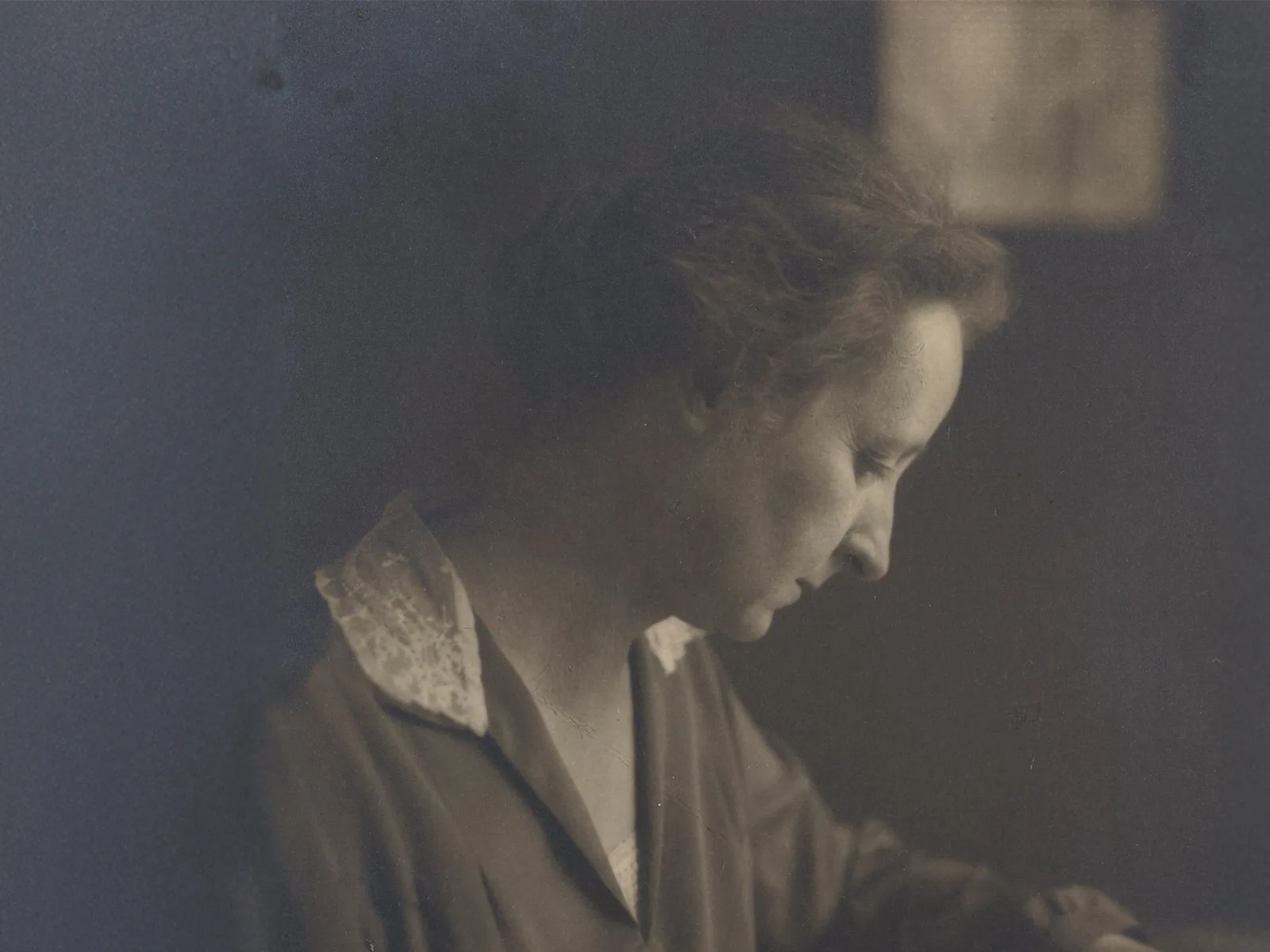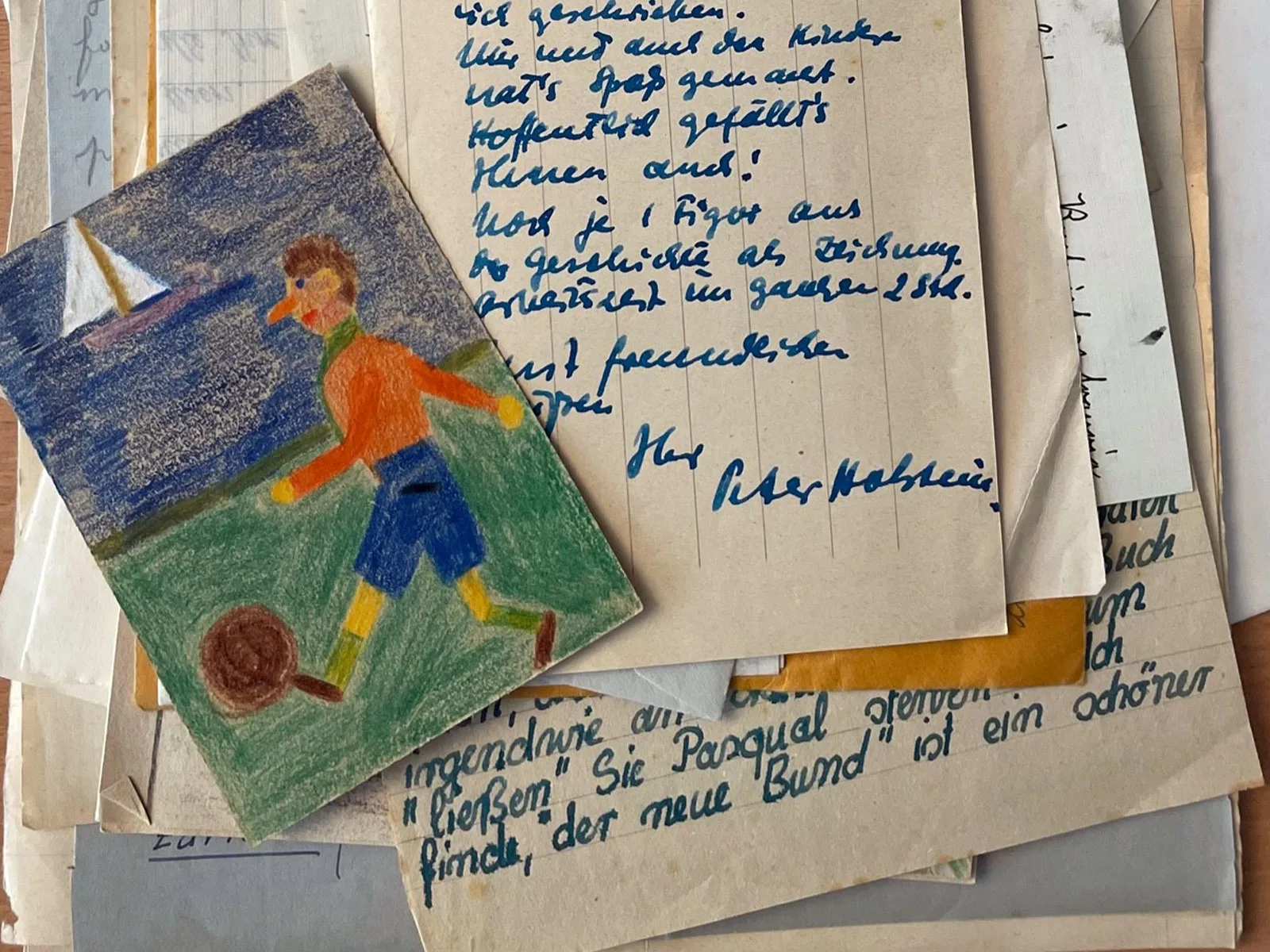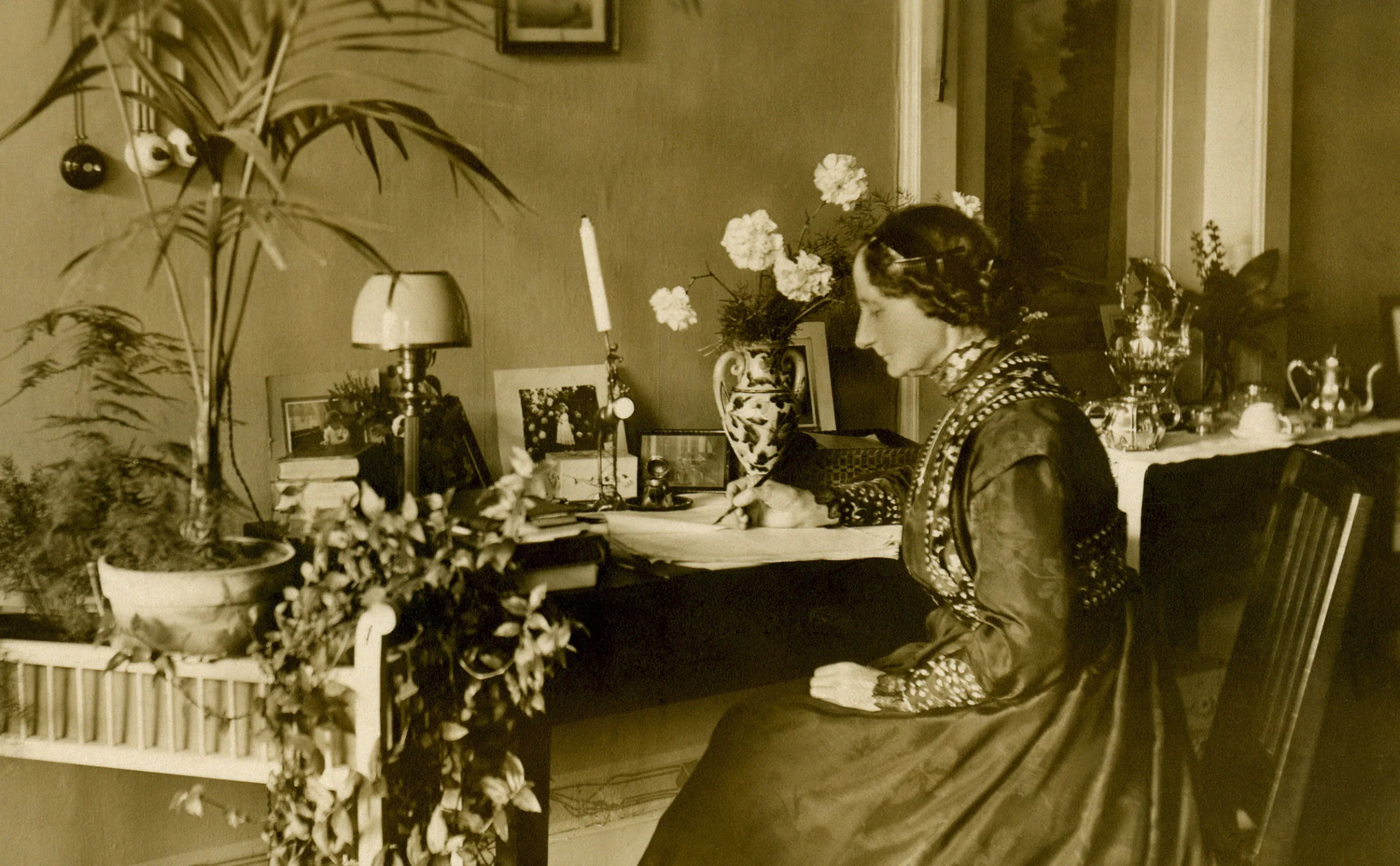
Zentrum Lina Bögli, Herzogenbuchsee
Around the world in ten years
Summertime is travel time. Usually. But exploring the world isn’t always possible. That makes us appreciate time travel and journeys of the mind all the more. The world trip undertaken by Lina Bögli, daughter of a Swiss peasant, is the perfect combination of both.
It was the beginning of July 1892. Lina Bögli was 34 years old and worked in Krakow as a nanny and housemaid. She had just made the decision to go on a ten-year trip around the world. A bold venture for a single woman. Using her savings, she spent 1,000 francs booking passage on a ship from Brindisi to Sydney. She had 400 francs left to buy a few things and get herself to Italy. She already knew she would arrive in Sydney with practically no money. Lina decided on Australia because she was afraid she would be homesick and wanted to do all she could ‘to make retreat impossible’. That is what she wrote in her journals. Possibly she was also leaving Krakow to get over a broken heart.
On 20 July 1892, Lina Bögli boarded a transatlantic steamship in Brindisi. On board were numerous English civil servants on their way to take up posts in the colonies. There were few women; most of them were brides going to Australia to marry their English grooms. The voyage to Oceania sailed via Port Said and the Suez Canal to Ceylon. Lina visited Colombo, but didn’t like the place. ‘Unbearably hot, too many snakes and too many beggars,’ was her brief summation.
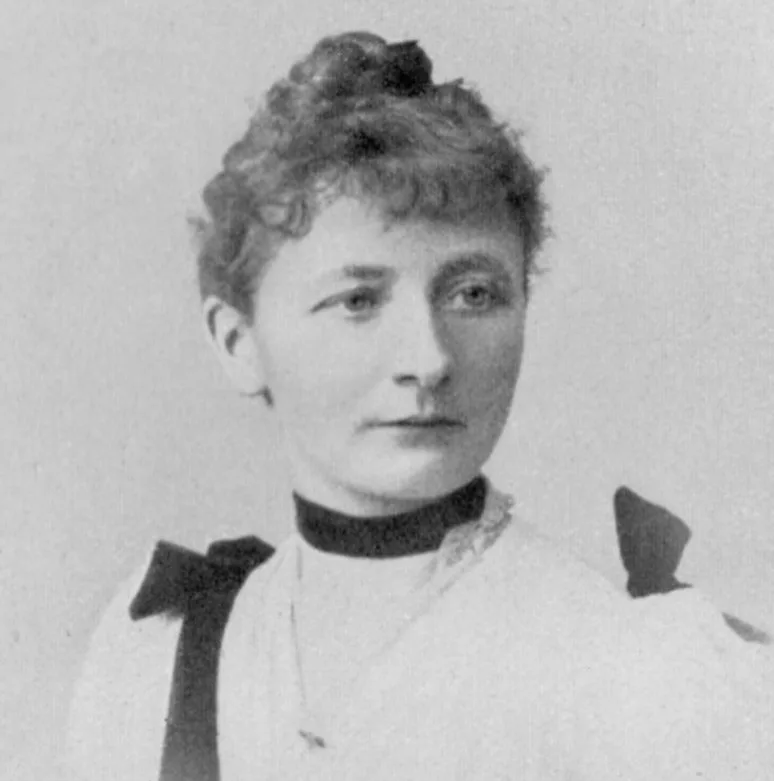
Lina Bögli in Krakow, 1892.
Zentrum Lina Bögli, Herzogenbuchsee
On 24 August 1892, after almost five weeks, Lina disembarked in Sydney. The peasant farmer’s daughter from Oschwand in Bern’s Oberaargau was proud of herself. She had come a long way, and her start in life had been anything but easy. Her mother had died when she was twelve years old. From then on, like many poor girls of that time, Lina had worked for a pittance as a domestic servant. At the age of 20, Lina took up a position as a nanny in the family of the Polish Count von Sczaniecki. In Krakow, she took part in the intellectual and cultural life of the noble family, and she had their full moral support when, as a 28-year-old, she went to Neuchâtel in 1886 to become a teacher. This venture cost her all her savings. After two years of training and a stint in London to learn English, she returned to Krakow and from then on worked as a governess for the von Sczaniecki family.
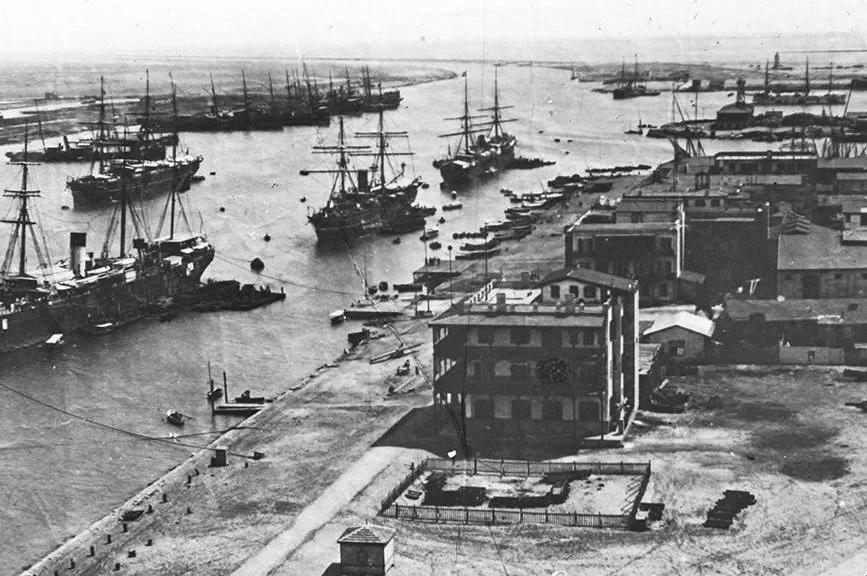
Port Said, Egypt, early 20th century.
Zentrum Lina Bögli, Herzogenbuchsee
Now the farmer’s daughter from Oschwand was in Sydney. Lina found accommodation with a family whose address had been given to her by an English friend. She immediately started looking for a job as a teacher, and after two weeks found a position at a private school. Her plan to finance her trip by working seemed to be going well. The pay wasn’t bad, but it wasn’t enough to enable her to save money to continue her journey. So she taught at three private schools simultaneously, and stayed in Australia for four years. During the school holidays, she enjoyed the hospitality of her pupils’ parents, who regularly invited her to their country spreads.
Lina Bögli liked to record her observations. These show how Eurocentric her view of the world was. In a talk on Australia which she gave years later in Switzerland, she described the Aborigines as follows: ‘Because they are nomads and are here today, there tomorrow, they don’t put much interest or effort into building houses, and they have no notion of agriculture; their only occupation is fishing and hunting and in fact they hunt people and animals, which are then placed on the fire without further preparation, cooked and then eaten with skin and hair. The Australian negroes are therefore at the lowest level of human culture.’

Aborigines at the Darling River, Australia, about 1902.
Zentrum Lina Bögli, Herzogenbuchsee
In 1896, Lina left Sydney for New Zealand. In her bag she had several job references that would make it easier for her to find a job as a teacher. But she didn’t plan to start using them until she got to America. Until then, she was going to treat herself to a couple of months’ holiday. She had enough savings. She found this voyage less agreeable than the first. The ship was overcrowded, she had to share a room with three actresses and she was constantly seasick. When Lina arrived in Auckland she couldn’t find a hotel room, because the year’s biggest horse racing meeting was taking place, but she eventually found a room in a small guesthouse.
She fell into conversation easily with all kinds of people, and discovered something admirable: New Zealand women had had the right to vote since 1893! Lina wrote in her account of her journey: ‘Dr Mary such-and-such, Miss Mabel, solicitor, Mrs Amy, stockbroker, etc. Female managers are not uncommon either, and in some of the small towns on the island women have even progressed to positions as senior officials and civic leaders.’ After almost a month in New Zealand, Lina left for Honolulu. On the way she stopped in Samoa, where she was invited by the English mission stations to visit them on the archipelago’s smaller islands. The colonial infrastructure helped Lina Bögli on her travels. Accommodation and work were quickly found, and there were no passport checks.
On 6 March 1897, Lina disembarked in Honolulu. She was instantly captivated by the beauty of the ‘Sandwich Islands’. In Hawaii, Lina was appointed teacher of German and French at the local high school by the country’s Minister for Education. In 1898 she witnessed the annexation of the country by the United States. Despite resistance by the deposed Queen Liliuokalani, the country became part of the USA.
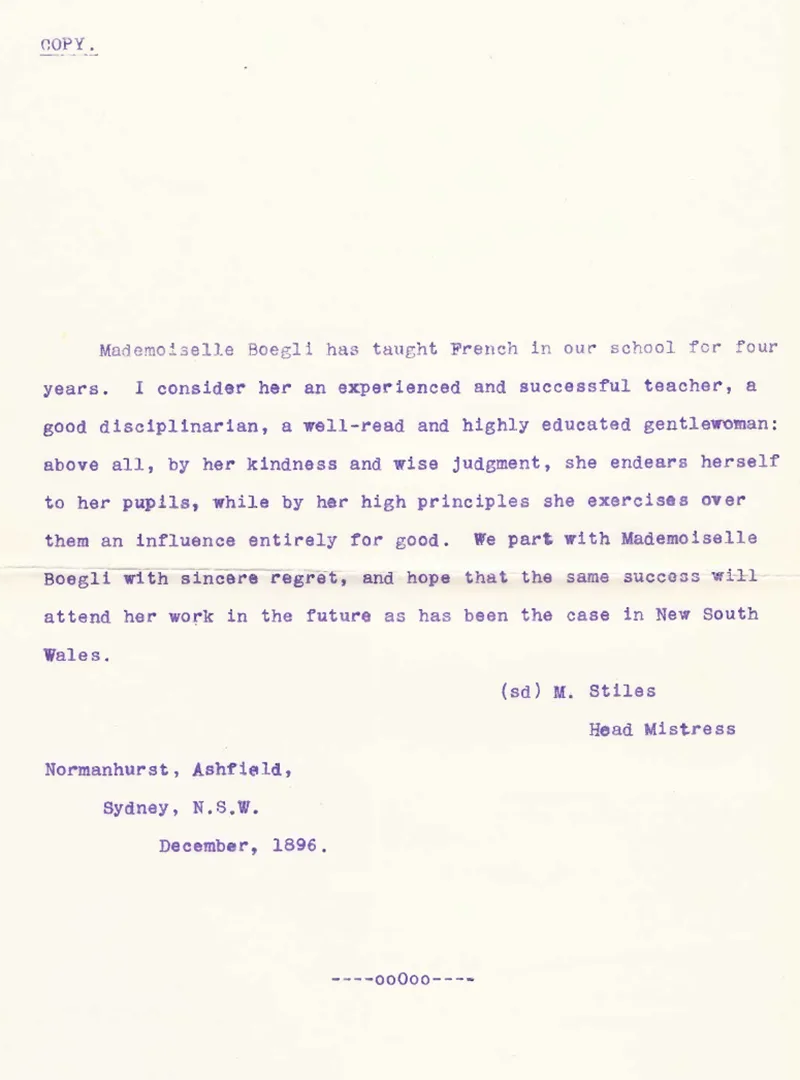
Job reference for Lina Bögli, Sydney 1896.
Zentrum Lina Bögli, Herzogenbuchsee
Lina Bögli went on travelling for another four years. She traversed the USA and travelled throughout Canada. Along the way, she always found teaching jobs. In 1902 she finally went back to Europe. On 12 July, after travelling the world for ten yeas, Lina Bögli arrived back at the railway station in Krakow and withdrew to a country estate owned by the von Sczaniecki family, to write the account of her travels, Forward, that would make her world-famous. But by 1910, her feet were itchy again. At 52, she travelled to China on the Trans-Siberian Railway and then on to Korea and Japan. There too, she eked out a living as a teacher. In 1914 she returned to Switzerland and settled in Herzogenbuchsee.

